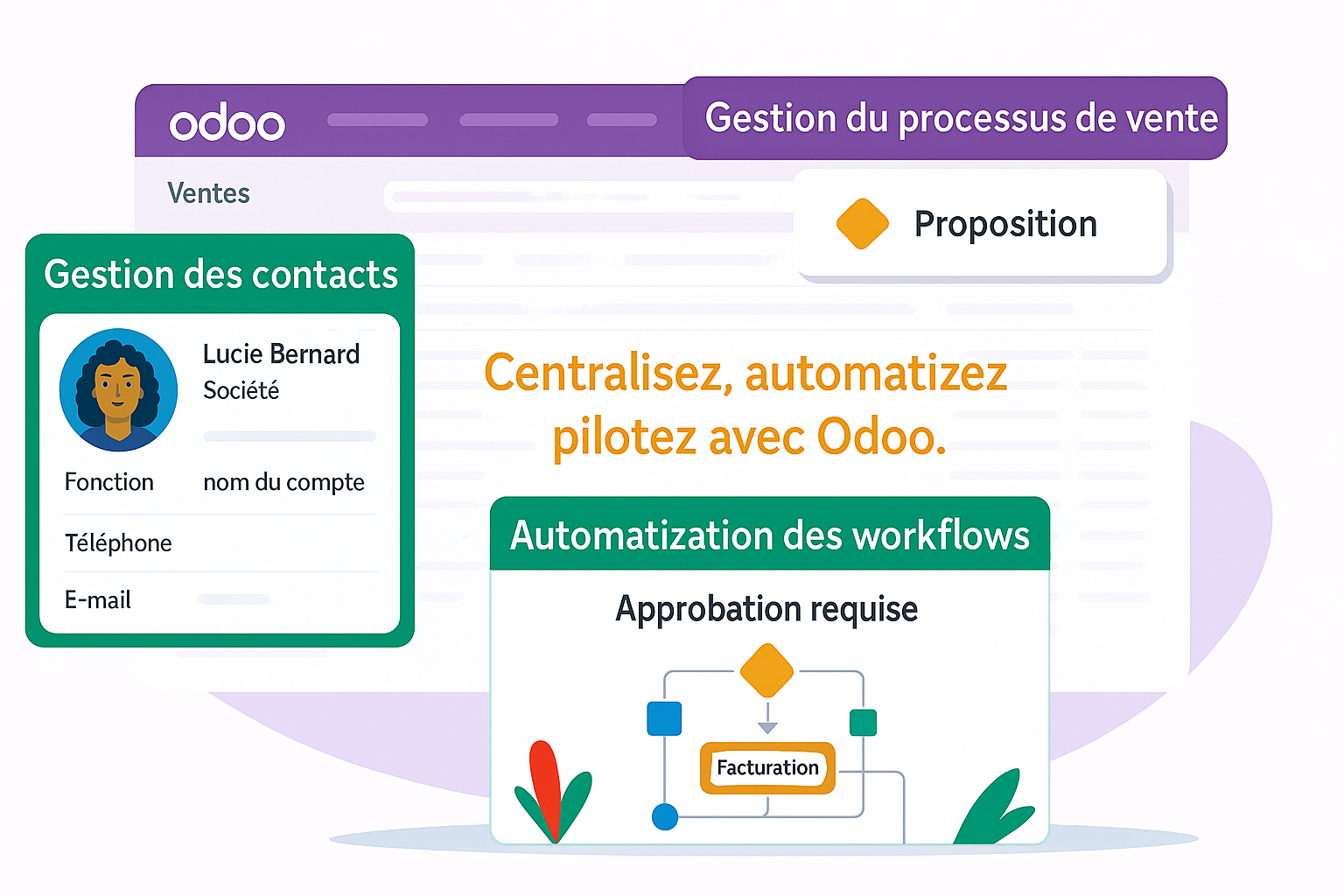1. What is an ERP?
An ERP (Enterprise Resource Planning) is an integrated information system that manages all company resources and processes: sales, purchasing, production, human resources, accounting, etc.
2. Why adopt an ERP?
-
Centralized data for better consistency and accessibility
-
Streamlined internal processes through unified management
-
Reduced manual errors through automation
-
Real-time tracking of key indicators for faster, informed decision-making
3. Essential Modules to Know
-
Sales and Purchasing Management
-
Inventory and Logistics Management
-
Accounting and Finance
-
Human Resources and Personnel Management
-
Production and Planning (MRP)
4. Example: Odoo
Odoo is a modular, scalable, open-source ERP suitable for businesses of all sizes. It stands out for its user-friendly interface, flexibility, and its ability to adapt to specific needs by activating only the necessary modules.
5. Common Mistakes to Avoid
-
Choosing an ERP without prior needs analysis
-
Neglecting the importance of user training and support
-
Trying to automate everything from the start
-
Underestimating organizational impacts
6. The Importance of Change Management
Implementing an ERP is not just a technical project. It involves:
-
A tailored training for users
-
A structured change management plan
-
Mobilizing internal champions to support adoption
7. Sustaining Your ERP
To ensure long-term efficiency and success of your ERP, it is essential to plan for:
-
Regular maintenance
-
Continuous functional improvements
-
Responsive user support
-
Up-to-date internal documentation
Conclusion
An ERP is a key strategic tool to structure growth and improve your company’s performance. SandSkills supports you in implementing your ERP, especially Odoo, with personalized and results-oriented guidance.




